Let's talk about something exciting yet fundamental: your small business's brand identity. Think of it as your business's personality. Just like a person, your business needs its own style, voice, and vibe to stand out in a crowded room (a.k.a. the market).
But why should you care? Well, in the vast sea of businesses, creating a brand identity is key. It’s what makes your customers say, "Yep, that’s the one I want!" instead of walking past like you’re just another face in the crowd.
Creating a killer brand identity isn’t just about looking good (though that’s a nice perk); it’s about connecting dots between what you offer and what your audience cherishes. It’s your secret sauce, your business's handshake, your... you get the picture.
What is brand identity and why do you need one?
Did you know?
Brand identity refers to the many components that make up your business personality – name, logo, visual system, positioning, messaging, brand experience, advertising, & tagline just to name a few. As a small business owner, you can use the various components of your brand identity to convey different aspects of your brand.
For example, your visual system and color palette may convey that your brand is warm, friendly, and approachable; and your messaging can be used to convey a professional or humorous tone of voice.
Creating a strong brand identity is crucial for any business to stand out and connect emotionally with customers. By defining your brand's personality, values, and visual style, you make your company memorable and build loyalty. A consistent brand identity across all touchpoints allows customers to recognize you and understand what you offer, differentiating you from competitors and driving growth.
Launch your business in minutes with GoDaddy Airo™
How to Create a Brand Identity in 2025
In this guide, we’ll sprint (no marathons here) through the nuts and bolts of building a brand identity that not only looks sharp but resonates with your audience and stands the test of time. We’ll keep it clear, actionable, and maybe even fun.
Ready to dive in? Let's build a brand identity that's not just seen but remembered.
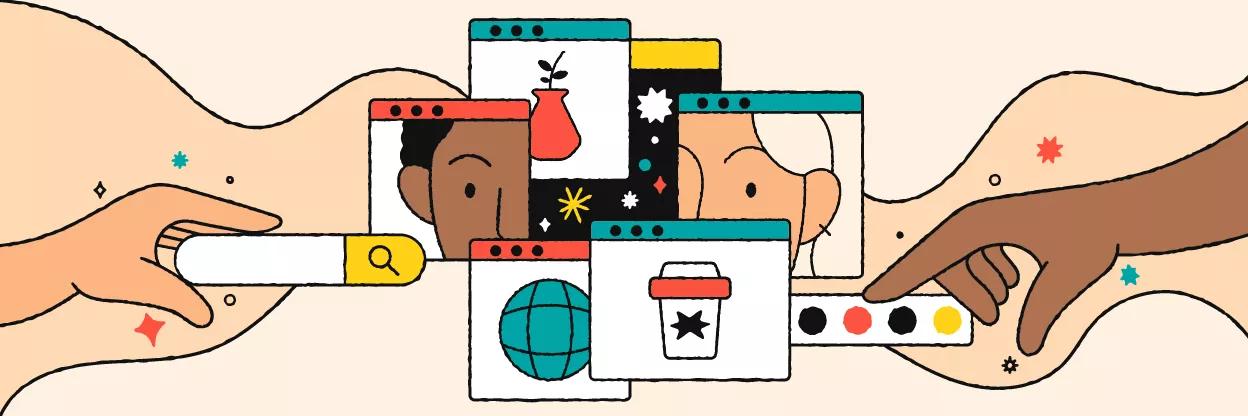
1. Understand your audience
Let’s face it – you can't be everyone's cup of tea, nor should you want to be. Your goal? To be the espresso shot in the morning for your ideal customer – necessary, anticipated, and uniquely satisfying.
Doing a market research
First up, who are these mythical creatures we call your audience? They’re not just numbers or faceless entities. They’re real people with unique living situations, preferences, and screen time.
Understanding your customer’s needs and buying habits is the cheat code to your business success.
Consider the emotional and real-world rewards that your business offers. Prioritize these concepts when doing market research.
There are many ways to conduct customer research. You can use information from customer purchase history, website analytics, and audience insight tools within ad platforms. This data will help you create more accurate audience personas.
Creating your audience personas
So, what are audience personas? These are semi-fictional characters based on real customers. Think of them as friends or family – who are they? What do they do for fun? What keeps them up at night (besides late-night taco cravings)?
Market Research
Crafting these profiles helps you understand who your audience is, allowing you to tailor your brand in a way that speaks directly to them.
Imagine you’re creating a character – one whose storyline includes falling in love with your business. Start by defining just one very specific kind of customer and build up to a few more personas.
Customer Segments
Outline your ideal customers’ age range, interests, job titles, pain points, and anything else relevant. But remember, while “35-year-old, coffee-loving, tech-savvy project manager who hates slow internet” is a start, let’s dive deeper…
What kind of music do they listen to? What do they value most? What motivates them? What are their goals? What challenges do they face? How can your product or service make their day better? Give them a name.
Understanding your audience’s challenges and needs helps you to connect with them on an emotional level. This understanding ensures your brand identity not only resonates but also becomes integral to their daily lives.
This is just a first ideal customer, do not worry about getting it perfect. Customer profiles and personas evolve over time as you build your brand.
Knowing the difference between Brand Identity and Brand Image
While brand identity defines how your brand wants to be perceived through elements like color, design, and messaging, brand image refers to how consumers actually perceive your brand. It is the impression that forms in the minds of your audience based on their interactions and experiences with your business.
To ensure your brand is perceived positively, it’s crucial to align your brand identity with your desired brand image. This means consistently expressing your brand values and identity across all touchpoints to shape and reinforce how your audience perceives your brand.
Putting it all together
With your personas in hand and empathy at heart, you're ready to make decisions that will attract your ideal audience. From the colors and fonts that you choose, to the words you write, every part of your brand identity should be a nod to the folks you want to serve.
Actionable takeaways
- Conduct Research: Use insights to begin to segment the market based on demographic & psychographic behaviors.
- Create Audience Personas: Dive into who your customers are and what makes them tick.
- Empathize: Understand their challenges and how your brand can help.
- Communicate: Find out where they hang out and talk their talk.
- Listen and Adapt: Use feedback to refine and grow your brand.
So that’s a quick, down-to-earth guide to understanding your audience. Next, we'll tackle defining your brand's mission and values, which is like writing your business's personal superhero creed. Ready to continue the adventure?

2. Define your brand's mission, vision & values
Alright, let's roll up our sleeves and dig into the bedrock of your brand – its mission and values. This isn’t about crafting some forgettable statement to slap on a website. No, this is about finding your brand’s beating heart and giving it a voice.
Crafting your mission statement
Think of your mission statement as your brand’s North Star, guiding every decision and action. It’s the "why" behind your "what." But don’t worry; this isn’t a thesis. Keep it simple, sincere, and straight from the heart.
Start by asking yourself: What problem does my business solve? Why did I start this journey? Your answers will ground your mission and make it relevant. A great mission statement is clear, inspiring, and well-crafted.
Simple advice for mission statements
A common template is something like this:
“We (what you do) for (who you do it for) by (how you do it) so (why you do it).”
Whatever order or words you choose for your mission statement, make sure to capture the who, what, how, and why of your brand.
If you need inspiration, look up the mission statements for your competitors and brands you admire.
Defining your vision
Your vision captures the direction of your business, where you are heading, and what you ultimately want to achieve. This is the big picture, a sentence or two that describes the change you want your business to make in the world.
You don’t talk about your vision externally; it is an internal guide for your decisions and actions as a business.
Embodying your values
Values are the soul of your brand. They’re not just fancy words you throw around; they're the principles you stand by – rain or shine. They affect how you interact with customers, the type of products you create, and the culture you build. Authenticity is key here.
To find your values, reflect on what matters most to you in business and life. Is it sustainability, transparency, innovation, community? Choose values that resonate deeply and mirror the ethos of your brand and your audience.
Some examples of core values
- Integrity: Honesty and transparency in all interactions.
- Innovation: Constantly pursuing new ideas and improvements.
- Respect: Treating all individuals with dignity and fairness.
- Customer Focus: Prioritizing customer satisfaction and needs.
- Teamwork: Collaborating and supporting each other towards shared goals.
- Accountability: Taking responsibility for actions and decisions.
- Quality: Commitment to excellence and high standards in products and services.
- Passion: Being enthusiastic and dedicated about the work.
- Community: Engaging, contributing, and being responsible to the community.
- Sustainability: Practicing and promoting environmentally friendly actions.
- Diversity: Valuing and promoting inclusivity and a diverse workforce.
- Adaptability: Being flexible and responsive to change.
- Professionalism: Maintaining high levels of professionalism in all aspects.
- Empowerment: Encouraging personal growth and decision-making.
- Communication: Ensuring open, honest, and effective communication.
- Balance: Encouraging a healthy work-life balance.
- Continuous Learning: Emphasizing personal and professional development.
- Service Excellence: Consistently delivering superior services.
- Collaboration: Fostering partnerships and shared achievements.
- Trust: Building and maintaining trust in all relationships.
Living your mission & values
Here’s where the rubber meets the road. It’s one thing to say you value customer service, but it’s another to respond to every customer query with speed and sincerity. Show – don’t just tell. Let your actions speak louder than marketing.
Communicating with clarity and passion
Once you’ve clarified your mission, vision, and values, now you can weave them into every aspect of your brand. These aspects of your brand should shine through in your website copy, social media posts, product design, and customer service. This consistency isn’t just good branding; it’s good business.
Aligning with your audience
Remember those audience personas we talked about? Here’s where they come back into play. Align your mission, vision, and values with the needs and desires of your audience. When they see their own values reflected in your brand, that’s when the magic happens – loyalty, trust, and advocacy.
Imagine a coffee shop that values community and sustainability. Their mission might be to provide a welcoming space for locals to connect, while sourcing ethical, eco-friendly beans. Every part of their business, from the recycled furniture to the community events they host, reflects these values. That’s brand identity in action.
And there you have it, the heart and soul of your brand neatly packaged. But we’re not stopping here. Next up, we’ll get our hands dirty with designing your visual identity—where your brand's heart beats in colors, shapes, and typefaces.

3. Design your visual identity
Time to get artsy! Your brand's visual identity is its face in the world. People should see in their mind when they think of your brand. This isn’t about picking the prettiest colors and calling it a day; it’s about creating a visual language that communicates your brand’s essence.
It’s also important to consider scalability in visual identity design, particularly for small businesses planning for growth. Visual elements should be adaptable across various mediums and sizes.
With other areas of your brand identity defined, your visual identity will bring the brand to life across various contexts to ensure a consistently powerful expression.
Logo
Your logo is the first impression of your brand. It should be simple, memorable, and reflective of your brand’s spirit. Think of the Nike swoosh or Apple’s logo – simple yet iconic.
Work with a professional designer if you can, and remember, your logo should look good on everything from a large billboard to a small business card.
Colors
Colors speak louder than words. Choose colors that reflect your brand’s personality and resonate with your audience. Each color has its own psychology, so choose wisely. Blue can evoke trust and security, while yellow can signify optimism and creativity. But don’t turn your brand into a rainbow—stick to a primary color and one or two accents for clarity and impact.
You can use color palette generators like Coolors to find colors that go well together based on what you have in mind. When you land on your colors, make sure to document the exact values (usually a 6-character hex code, e.g. #008080). Include these colors in your logo and in all the visual elements of your brand.
Typography
The fonts you choose for your brand carry just as much weight as your colors. They should align with your brand’s character—whether it’s professional, quirky, or somewhere in between. Remember, legibility is key. Your chosen typefaces should be easy to read across various mediums and devices.
Learn how to search for fonts in GoDaddy Studio.
Imagery
Whether it’s photography, illustrations, or graphics, your visual content should have a consistent style that aligns with your brand's vibe. This helps to reinforce your brand identity and makes your communications instantly recognizable to your audience.
There are many tools and platforms to create or customize visual elements, such as logo makers and design software with templates. You can explore GoDaddy Studio to find custom templates for social media that match your brand.
Brand guidelines
Once you’ve decided on all the elements of your visual identity, compile them into brand guidelines. This document is your brand’s rulebook; it ensures consistency across all platforms and mediums. Think of it as the style guide for your brand’s universe.
Designing your visual identity can be a thrilling journey, and it’s okay if you need to iterate a few times to get it right. Next, we’ll tackle how to give your brand a voice—because your brand isn’t just seen, it’s heard. Ready to give your brand the gift of gab?

4. Craft your brand voice & personality
Now that your brand has a face, let's give it a voice. Your brand voice is how you communicate with your audience, while your brand personality is the character trait that defines how you present yourself. Together, they make your brand relatable and memorable.
Finding your brand voice
Imagine your brand as a person at a party. Is it the life of the party, telling jokes and making friends? Or is it more reserved, offering thoughtful advice and insights?
Define your brand voice by choosing three to five adjectives that best describe how your brand communicates. If your brand were a person, how would it talk?
Be specific, and make sure this voice aligns with your audience's expectations and preferences. Your brand's voice should genuinely reflect the tone and style that customers feel comfortable with, while remaining authentic to you and your business.
Consistency is key
Once you’ve defined your voice, use it consistently across all platforms, from your website to your social media posts. This consistency helps build familiarity and trust with your audience. They'll start to recognize your brand's voice just like they would a friend's.
Developing your brand personality
Your brand personality makes your brand approachable and relatable. It’s what makes your brand feel like a friend rather than a faceless corporation. Define this personality with traits that resonate with your audience and reflect your brand values.
Are you friendly and casual, or authoritative and formal? Choose a personality that makes sense for your brand and stick with it.
For inspiration, you can choose one or a few of the 12 brand archetypes below. You might also look at the Myers-Briggs personality types – a great website for this is 16personalities.com.

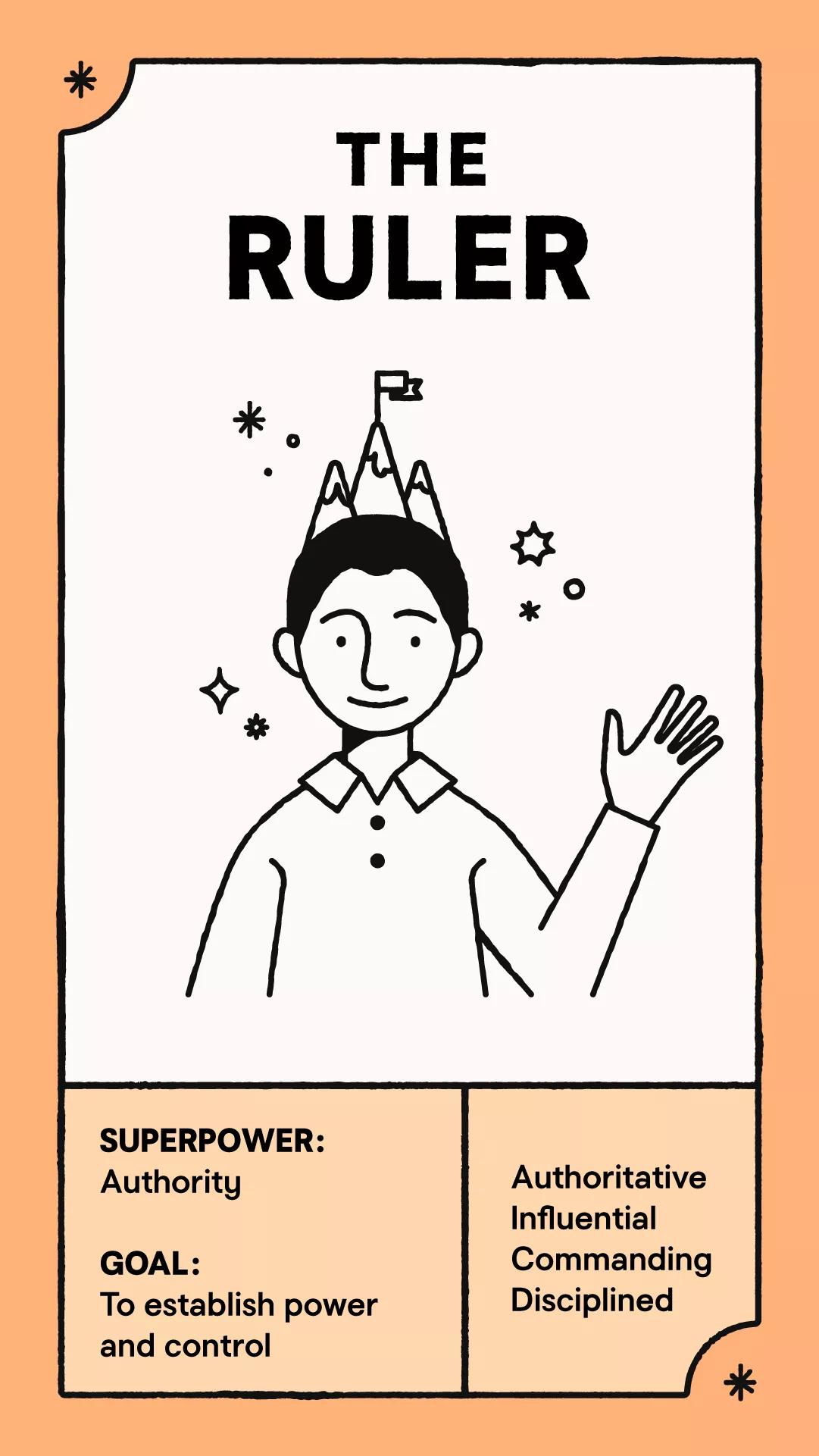
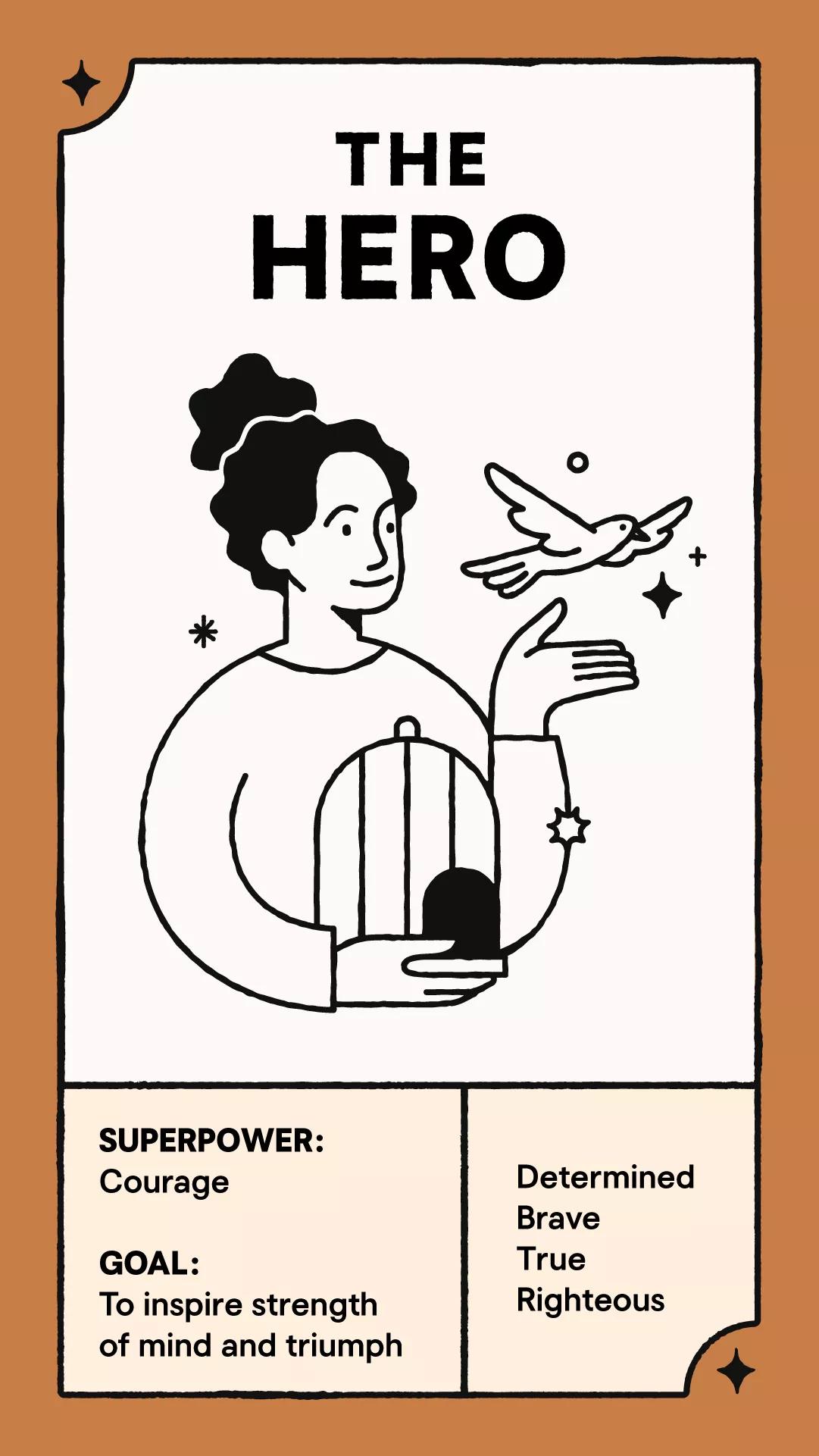
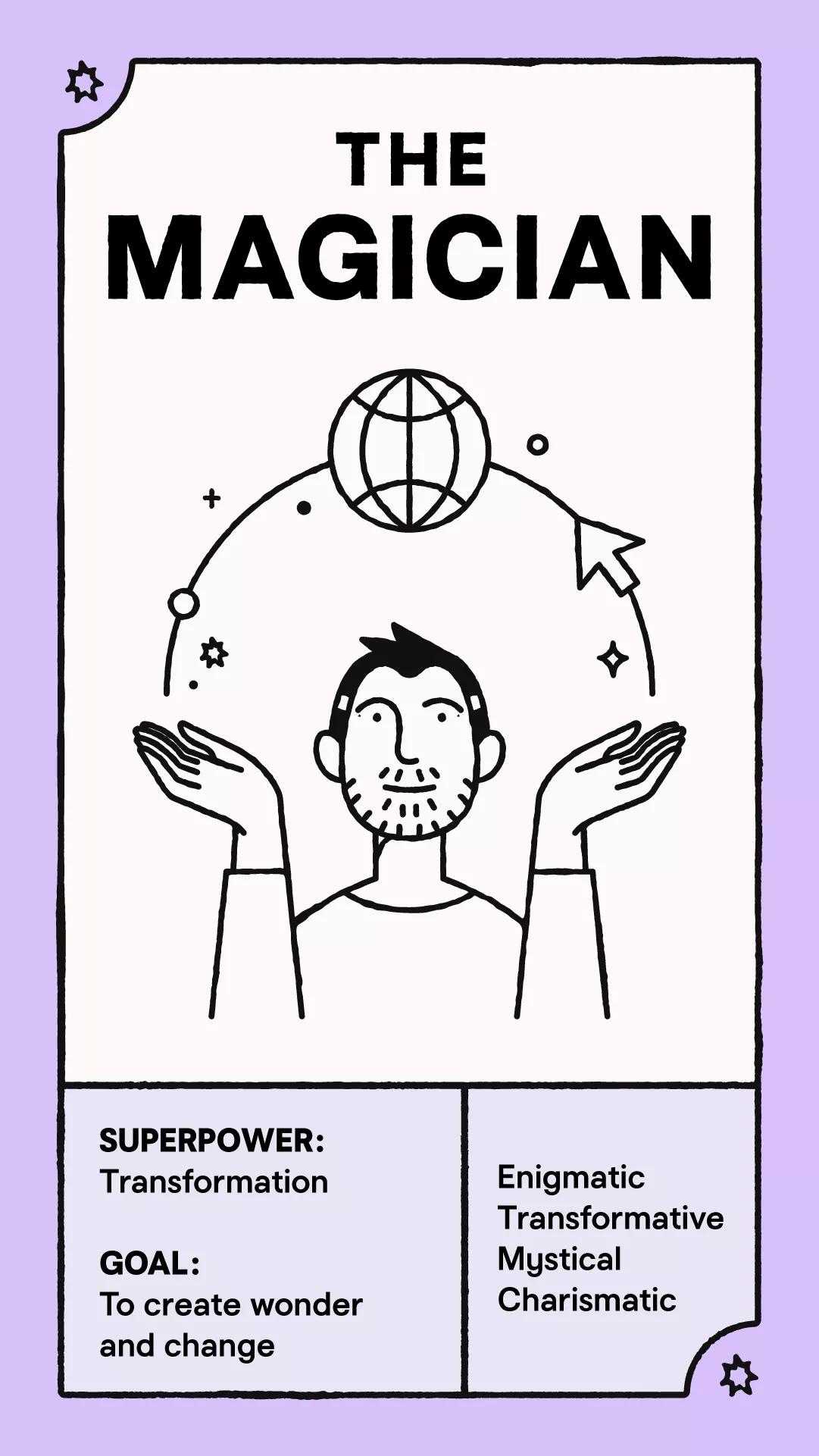
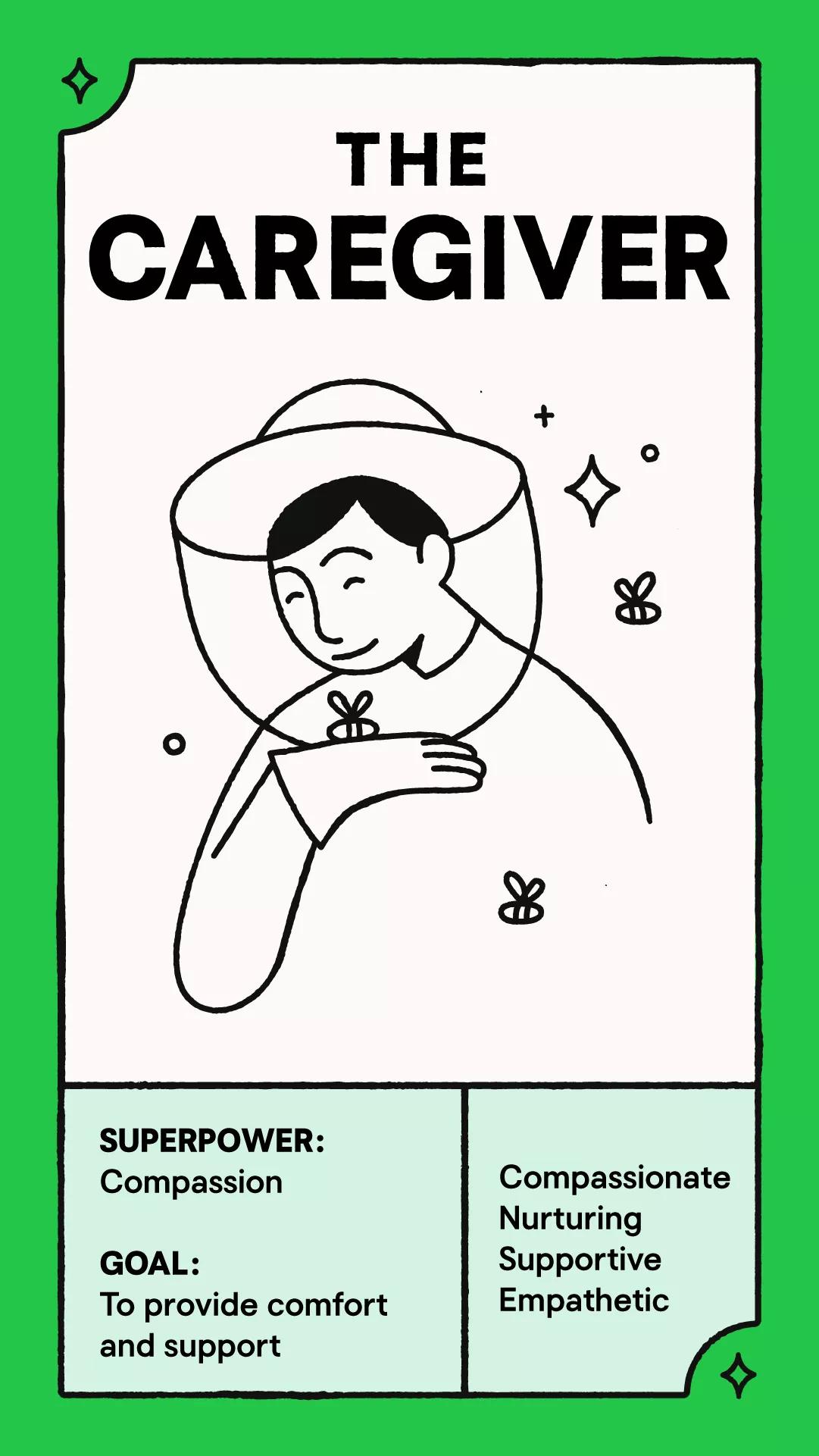
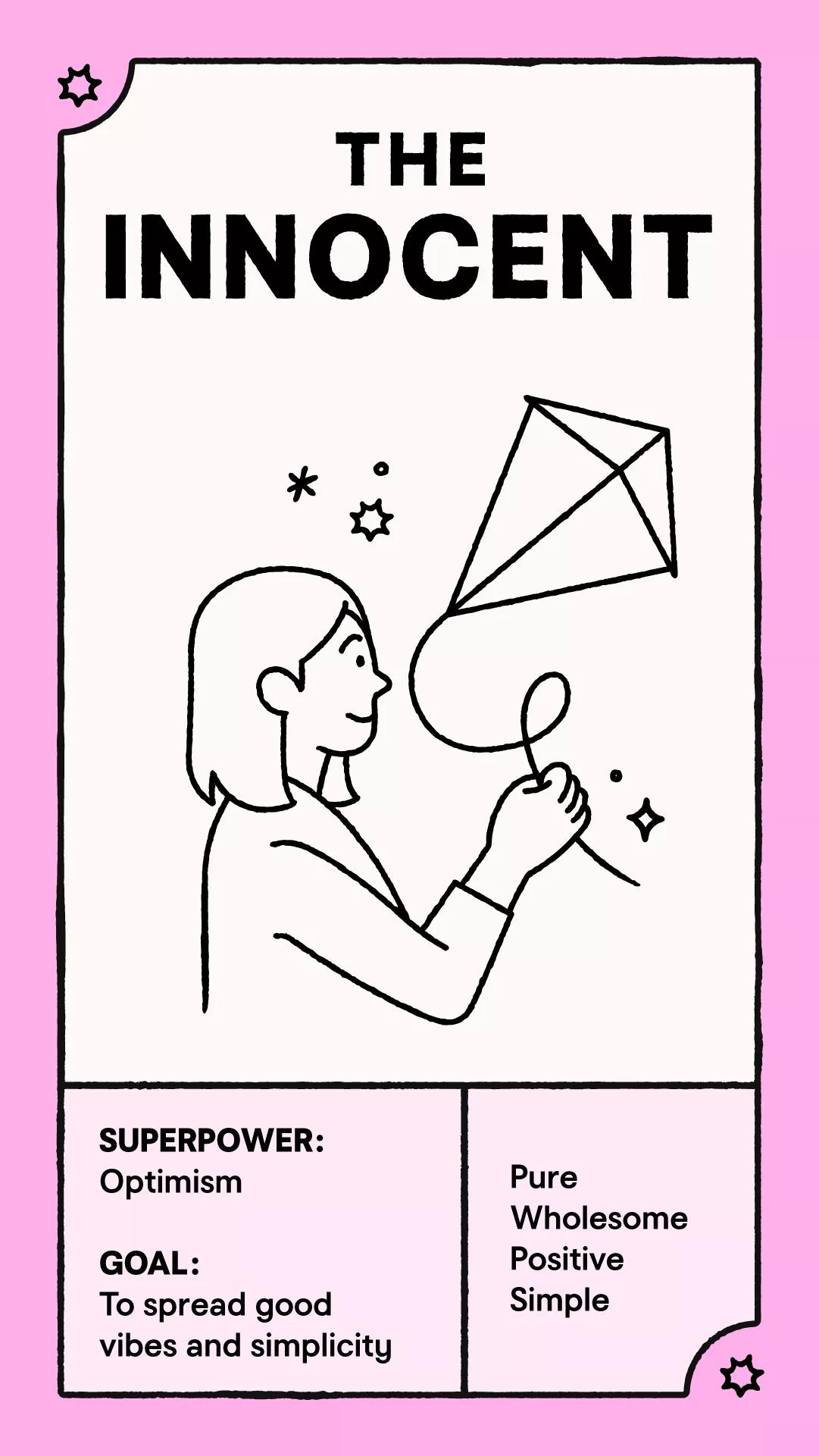
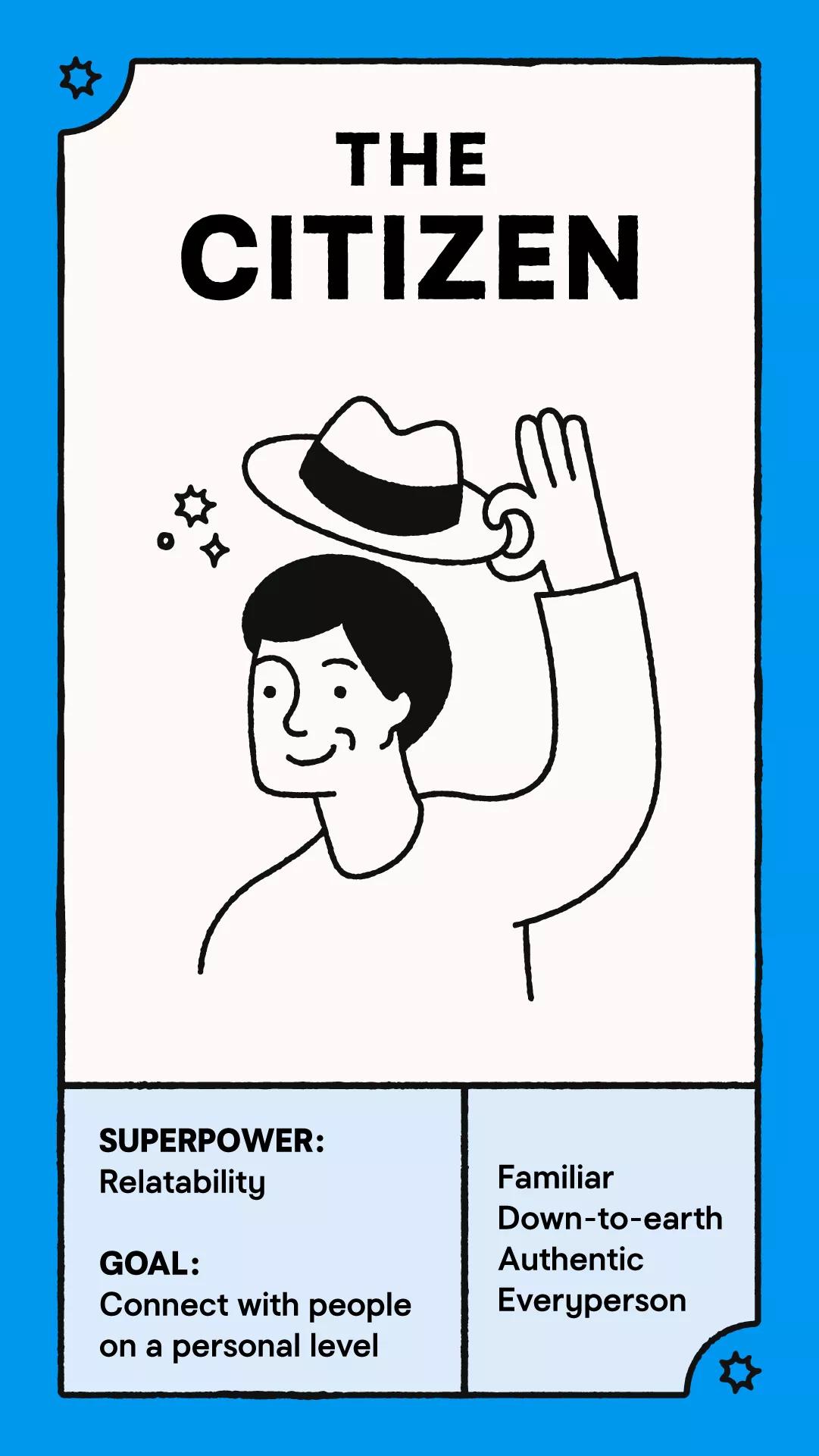
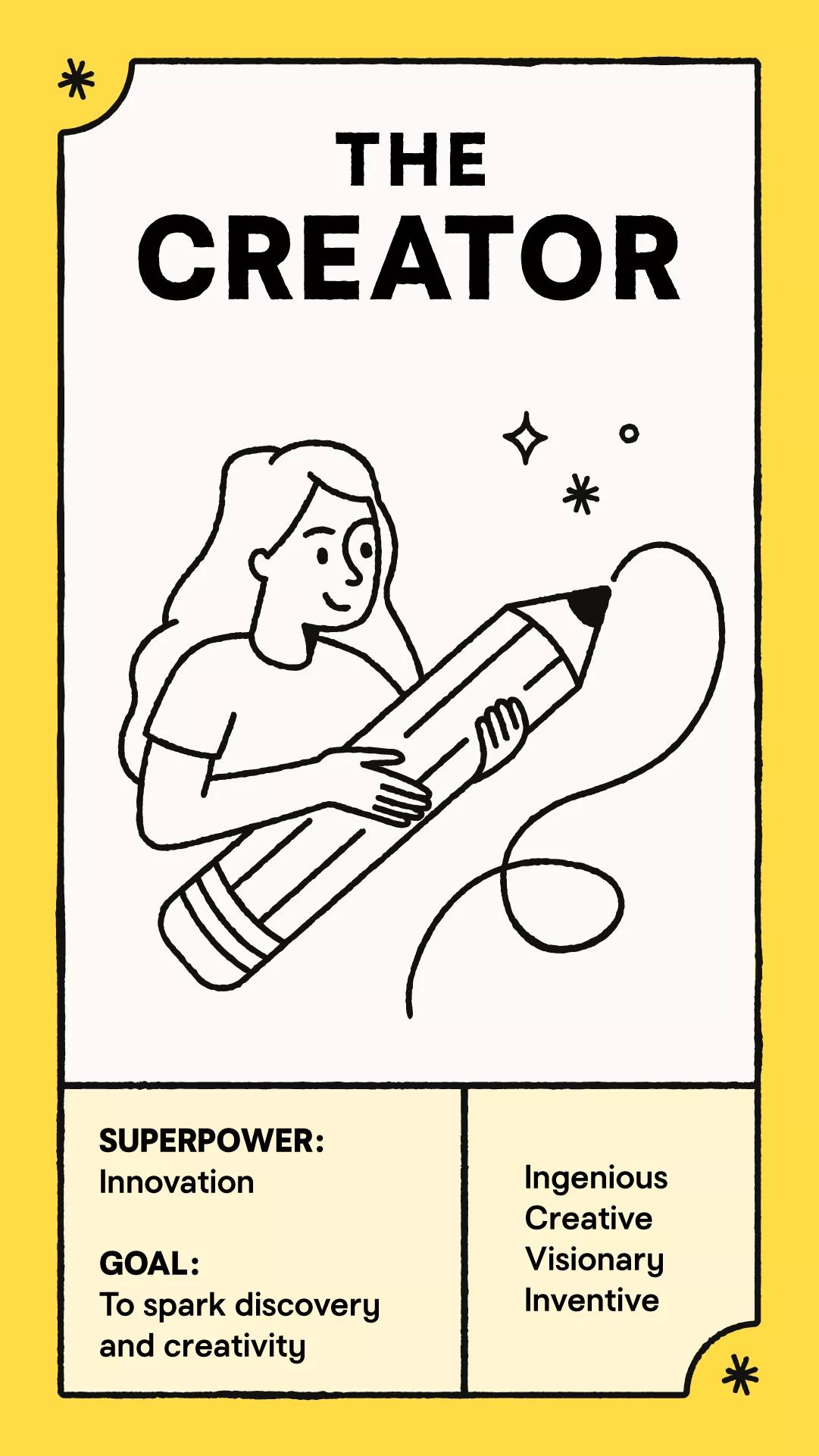
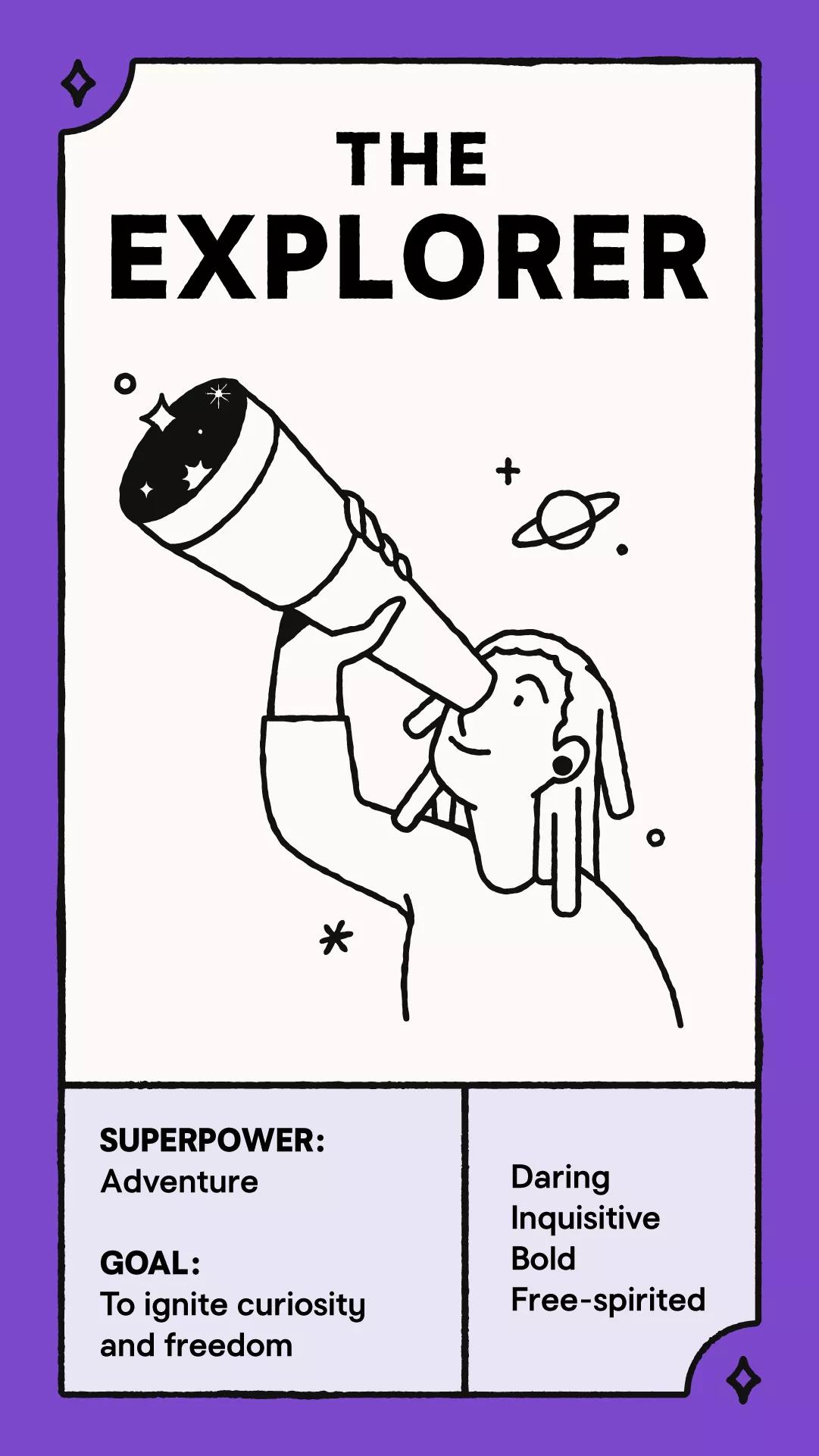
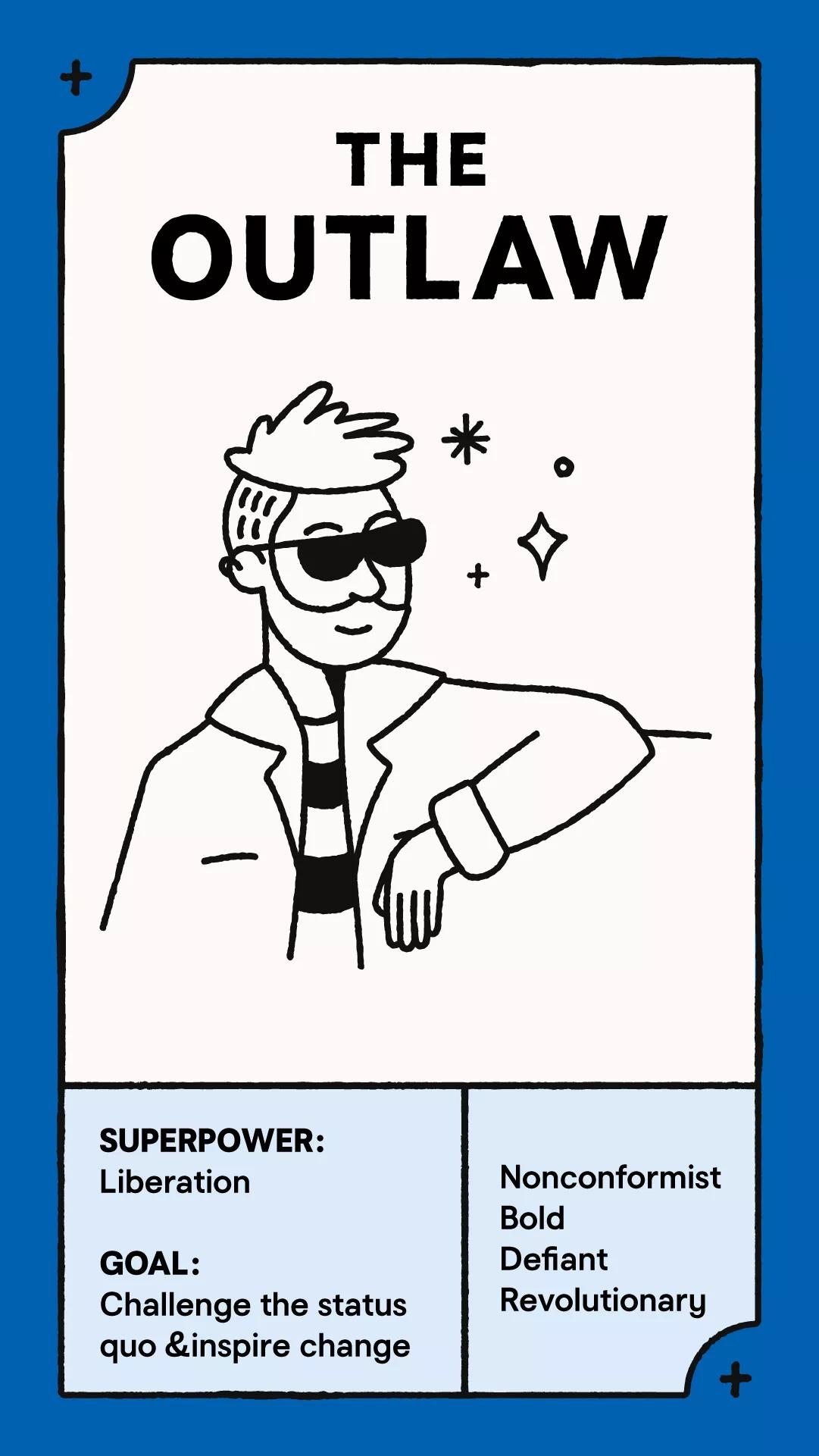


Engaging your audience
Use your brand voice and personality to engage with your audience in a meaningful way. This isn’t about broadcasting messages; it's about starting conversations and building relationships. Ask questions, respond to comments, and create content that speaks directly to your audience's interests and needs.
Adapting your voice
While consistency is important, don’t be afraid to adapt your brand voice to different contexts or platforms. The way you speak on LinkedIn might differ from Instagram, but the underlying personality and values should remain constant.
5. Create a style brand kit :
A brand style guide is crucial for maintaining a consistent brand identity across all touchpoints. When different teams like marketing, sales, customer service, etc. are involved, having clear guidelines ensures the brand is presented cohesively. This strengthens recognition, trust, and loyalty among customers.
The style guide should outline the personality, voice, visuals, and messaging that represent the brand's identity. It should include guidelines on logo usage, color palettes, typography, imagery, tone of voice, terminology, and more. These elements bring the brand to life consistently.
For visuals, provide examples of ideal photos, illustrations, icons, etc. Give instructions on how and when to use them. For tone, share examples of branded language and taglines that capture the personality. Define key messages, mission, values, and brand pillars too.
Leading brands have excellent brand style guides. It covers logo usage, colors, typography, imagery, and voice with examples. It also details personality, voice, logo, colors, photos, and more. Moreover, it can showcase the slogan, logo, historical ads, typography, and visuals that make their brand iconic.
In summary, a comprehensive brand style guide empowers anyone representing your company to stay true to the brand. It's a powerful tool for maintaining consistency across channels, teams, and customer touchpoints as you grow.
With your visual identity and personality set in your mind, you can use AI to simplify the process of creating documentation and a brand kit.
You can do this manually, or head over to our prompt library to copy our comprehensive AI prompt how to assemble a brand kit.
With a distinct voice and personality, your brand becomes more than just a business—it becomes a relatable entity. Next, we'll explore how to implement your brand identity across all platforms to ensure a cohesive and consistent brand experience. Ready to spread your brand's unique voice far and wide?

6. Implement your brand across all platforms
You've built a brand identity that's as unique as a fingerprint—now it's time to leave that print everywhere you go. Consistency across all platforms ensures that your brand is easily recognizable, which builds trust and credibility with your audience.
It’s also important to consider accessibility. Ensure that visual and written content is inclusive and easy to understand for all users.
By now, you have a brand kit with visual identity guidelines as well as documentation for your personality, voice, and tone. Keep these handy as you publish content and interact with customers.
Website
Your website is often the first in-depth encounter customers have with your brand, so make sure you create a site that makes an impact. Ensure your visual identity and brand voice are front and center. Every page should scream "you" — from the homepage to the contact form. And don't forget about mobile responsiveness; your digital front door should welcome everyone, no matter the device.
Social media
Social media is where your brand voice can truly come to life. Use these platforms to showcase your brand's personality, interact with your audience, and share content that reflects your brand’s values. Remember, each platform has its own vibe, so tweak your message accordingly while keeping your brand’s core identity intact.
Emails are like handwritten notes in the digital age—they offer a personal touch. Armed with a professional email address, use your emails to strengthen relationships with your audience by keeping your brand's voice and visual style. Whether it’s a newsletter or a promotional email, make sure it feels like it’s coming from a friend.
Packaging & print
If your business has physical products or print materials, these are prime opportunities to showcase your visual identity. Your packaging, business cards, brochures, and even your receipts should reflect your brand identity. They're not just items; they're ambassadors of your brand.
Customer service
Your brand voice and personality should extend to every customer interaction. Train your team to communicate in a way that reflects your brand—whether it’s over the phone, via email, or in-person. Every interaction is a chance to reinforce your brand’s identity.
Consistency checkups
Regularly review all your platforms and touchpoints to ensure consistency. It's easy for things to go off-brand over time, especially as your business evolves. Schedule regular check-ins to keep everything aligned.
At the same time, recognize you can be agile with your brand’s evolution. Be prepared to adapt quickly to changes in the market or audience preferences.
Implementing your brand identity across all platforms might seem like a Herculean task, but it's all about taking one step at a time. With consistency, your brand will start to feel like an old friend to your audience. Up next, we'll look into how to keep your brand fresh and relevant over time.

7. Monitor & evolve your brand
Your brand is out in the wild, shining and resonating, but the work isn’t over. Brands are living entities that need care, attention, and sometimes, a little evolution. Let’s explore how to keep your brand growing and adapting.
Regular brand audits
Conducting regular brand audits is like giving your brand a health check-up. Review your visual elements, voice, and overall presence to ensure they align with your current brand values and audience expectations. Are you still resonating? Are there new competitors on the block? An audit will help you stay competitive and relevant.
Gather feedback
Listening is a superpower in branding. Gather feedback from your customers, employees, and even social media followers. What are they saying about your brand? What do they love, and what could be improved? Use this feedback as a guide for making informed adjustments.

Stay tuned to trends
While chasing every trend is a no-go (remember, consistency is key), staying informed helps you understand the changing landscape. Knowing what’s trending can inspire updates that keep your brand fresh without losing its core identity.
Innovate within your brand
Innovation doesn’t mean reinventing the wheel. It means finding new ways to express your brand’s unique perspective and values. Maybe it’s a new product line, a bold marketing campaign, or a community initiative. Keep your brand moving forward with innovative ideas that align with your mission and values.
Know when to rebrand
Sometimes, a significant change in your business or market causes the need to rebrand. This isn’t a decision to be taken lightly, but it can be essential for growth. If you’re facing a rebrand, return to the basics: understand your audience, define your mission and values, and create a visual identity that reflects this new era.
Stay authentic
Through all the changes and updates, your brand’s authenticity should remain untouched. It’s your brand’s soul. As you evolve, ensure that every decision and change reflect the true essence of your brand. Authenticity is what connects people to your brand on a deeper level.
Keeping your brand dynamic and responsive doesn't mean losing its essence. It's about growing with your audience and the times. Now, as we prepare to wrap up this journey, let’s ensure your brand not only lives but thrives.

Conclusion & next steps
Congratulations! You've navigated the ins and outs of building and growing a robust brand identity. By now, your brand should not just feel like a business; it should feel like a living, breathing entity with personality, vision, and values that resonate with your ideal customer.
Your next steps:
- Review and refine: Take another look at your brand elements. Are there areas that could be more aligned with your brand's heart? It's okay to go back to the drawing board.
- Feedback loop: Set up a system to continually gather feedback from your customers and team. Use this invaluable input to steer your brand in the right direction.
- Stay alert: Keep an eye on market trends, audience shifts, and your competition. Stay relevant but remain authentic.
- Celebrate your brand: Use your brand identity to tell stories, connect with people, and make a difference. Your brand is more than a logo; it's a promise, an experience, and a memory.
- Never stop learning: Branding is an ongoing journey. Keep learning, experimenting, and growing.
Building a brand identity is not a sprint; it's a marathon (with a few sprints thrown in). It requires patience, persistence, and passion. But the reward — creating a brand that connects, resonates, and endures — is worth every step.

